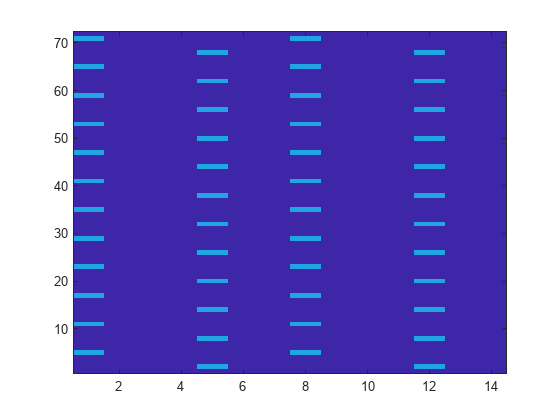Map Reference Signal to Resource Grid
This example shows how to map the cell specific reference signals to the resource grid for a subframe in the two antenna case.
Specify the parameter structure. In this scenario, there are 6 resource blocks in the downlink.
enb.CyclicPrefix = 'Normal'; enb.NDLRB = 6; enb.CellRefP = 2; enb.DuplexMode = 'FDD';
Create an empty resource grid for a subframe.
resourceGrid = lteDLResourceGrid(enb);
Specify NCellID and NSubframe in the input parameter structure. These fields are required to generate the cell-specific reference signals. In this example, select subframe number 0.
enb.NCellID = 10; enb.NSubframe = 0;
Generate the cell-specific reference signals for the two antenna ports by calling the lteCellRS function.
rsAnt0 = lteCellRS(enb,0); rsAnt1 = lteCellRS(enb,1);
Generate mapping indices for the two antenna ports. You need these mapping indices to map the generated complex symbols to the resource grid.
indAnt0 = lteCellRSIndices(enb,0); indAnt1 = lteCellRSIndices(enb,1);
Map the reference signal complex symbols to the resource grid. Use the generated indices in linear form. Plot the resource grid.
resourceGrid(indAnt0) = rsAnt0; resourceGrid(indAnt1) = rsAnt1; size(resourceGrid)
ans = 1×3
72 14 2
image(100*abs(resourceGrid(:,:,1)))
axis xy
figure
image(50*abs(resourceGrid(:,:,2)))
axis xy
The resulting matrix has the complex symbols in rsAnt0 and rsAnt1 in the appropriate locations, specified by indAnt0 and indAnt1.